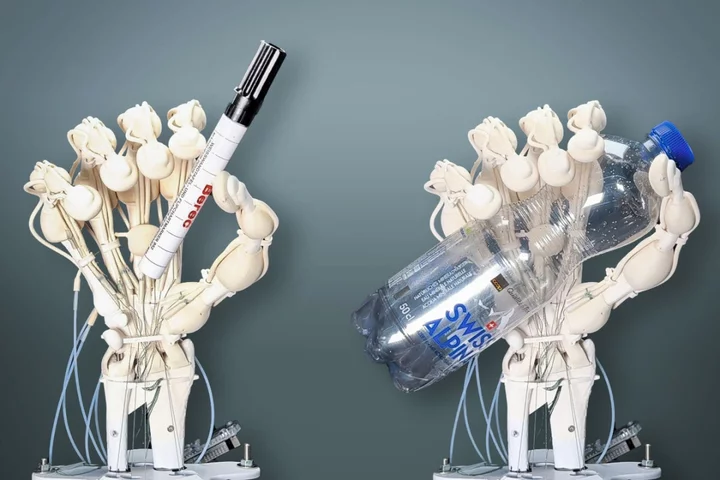Researchers have successfully created a robotic hand with bones, ligaments and tendons using 3D printing for the first time.
A team from ETH Zurich in Switzerland were able to accomplish the complex construction using a new technology that combines 3D printing with a laser scanner and feedback mechanism.
The method opens up the possibility of building far more complex and durable robots in the future, according to the researchers.
“We wouldn’t have been able to make this hand with the fast-curing polyacrylates we’ve been using in 3D printing so far,” said Robert Katzschmann, a professor of robotics at ETH Zurich and leader of the research into the next-generation robotic hand.
It marks a breakthrough in both 3D printing – with all the hand’s components printed simultaneously rather than assembled separately – as well as the field of soft robotics, which shuns materials like metal that are typically used to construct robots.
“Robots made of soft materials, such as the hand we developed, have advantages over conventional robots made of metal,” said Professor Katzschmann.
“Because they’re soft, there is less risk of injury when they work with humans, and they are better suited to handling fragile goods.”
Despite significant advances in industrial robots over the last decade, they still pose a considerable risk to humans working alongside them.
Earlier this month, a South Korean man was crushed to death by a machine that mistook him for a box of vegetables.
The latest soft robotic hand was detailed in a paper, titled ‘Vision-controlled jetting for composite systems and robots’, published in the scientific journal Nature on Wednesday.
“Recreating complex structures and functions of natural organisms in a synthetic form is a long-standing goal for humanity,” the paper notes.
“Our approach provides an automated, scalable, high-throughput process to manufacture high-resolution, functional multi material systems.”
Read MoreMIT invents self-replicating AI robots
Nasa spots collection of shocking materials on distant planet
Ring to preview security features with abuse charity to boost safety
WhatsApp users warned they will soon have to pay to keep old messages and photos









